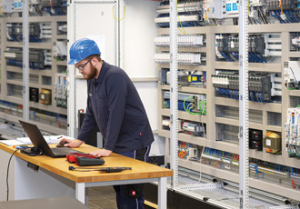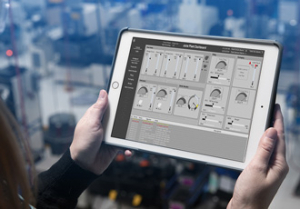Is there one kind of SCADA for all applications?

Supervisory Control and Data Acquisition (SCADA) systems have been helping various industries to control and refine their processes for over 30 years. Thanks to its relative maturity and the level of investment made in SCADA platforms over the years, there are several tried and tested options available.
Author: Paul Hurst, Director at Products4Automation.
As a technology it is helping users improve productivity and efficiency while solving a wide range of specific data, control and visualisation challenges; however, is there one SCADA product that is suitable for all applications?
The factory of the future will be a ‘smart factory’, characterised by a complete integration of automation with information and communication technology (ICT), networking all the subsystems of manufacturing industry, from raw material provision to delivery to customers. By merging the physical and digital worlds of industrial production into a cyber-physical system companies can consolidate their development, production and logistics operations.
SCADA platforms at the forefront of innovation can provide a key tool to create a smart factory, empowering users to have oversight of single devices, complete plants or numerous factory sites all together.
Operator Interface Terminals (OITs) or Human Machine Interfaces (HMIs) are often used to control standalone devices or small processes. These are small, low cost systems that provide basic tasks such as initiating functions and switching the equipment on and off. However, the operation of these user interfaces may not be intuitive, as their operating systems (OS) are often non-Windows based. Also, the limited functionalities supported may not be sufficient for Industry 4.0 and its urge for data.
OITs and HMIs are not the only options. In fact, modern SCADA systems provide a viable alternative, as they can be adapted to small applications, without the major financial investments that often characterise proprietary machine interface solutions. In addition to performing the same tasks as any interface systems, this solution also offers the full range of SCADA capabilities, such as data logging, data analysis and reporting. These additional insights on the machine performance are provided via the widely used Microsoft Windows OS.
An original product that has proved successful is Progea’s Movicon 11 SCADA/HMI, with over 100,000 instances installed globally. The platform monitors, archives, analyses set processes and flags anomalies. In addition, the workspace is designed to ensure ease of use and intuitive navigation via Windows, captivating graphics, intelligent Editors and integrated auto-configurators.
By using SCADA for HMI applications, it is also possible to benefit from a scalable solution, something not supported so easily by a fixed user interface. While SCADA can be adapted to use on standalone devices it does not provide a physical communication network, however this can be established when upscaling the system.
This upscale is potentially limitless and different architecture is available. While SCADA has been traditionally confined within the plant walls, this is no longer the case. The system may consist of a vast number of channels within one production plant as well as a network of several factories. Also, a combination of both structures is a viable option, with systems gathering data from individual plants that are then connected to a central display.
In all these cases, large futureproof SCADA systems need to address different aspects of user requirements. Intuitive user interfaces are even more important than in small-scale SCADA. An immediate, comprehensive and coherent view of the processes is fundamental for the operators, which are not likely to be automation system experts.
In addition, with the push towards Industry 4.0 many devices and channels require excellent connectivity, optimal hierarchical control and partitioning as well as maximum cyber security. Enter the latest Movicon.NExT platform, that is designed to ensure a fast, smooth and transparent data flow, maximising connectivity.
The XML technology utilised allows end users to open and edit project with any editor, as well as to group and share them hierarchically. Additionally, this SCADA system provides a high degree of protection, such as recording and encrypting data on protected databases, setting access authentication and tracking changes.
Openness and compliancy with communication standards, such as the Open Platform Communications Unified Architecture (OPC UA) adopted by Movicon solutions, also contribute to the performance of SCADA. In this way, it is possible to implement the control system at different stages and connect HMIs or small scale SCADA purchased at different times and/or from different vendors.
Ultimately, it seems that the factory of the future will require a SCADA system that is flexible and can easily adapt to technology advances. For now, while one SCADA could be used for all applications, it is practical to have alternatives
Similar articles
More from Products4Automation
- Will 5G be a game changer for SCADA? 18th December 2019
- Controlling a textiles factory from home 22nd November 2019
- Increase production flexibility with better batch management 8th October 2019
- Cruise passengers stay cool with HVAC control systems 28th August 2019




 technology at Jacobs Vehicle Systems.JPG)







Write a comment
No comments